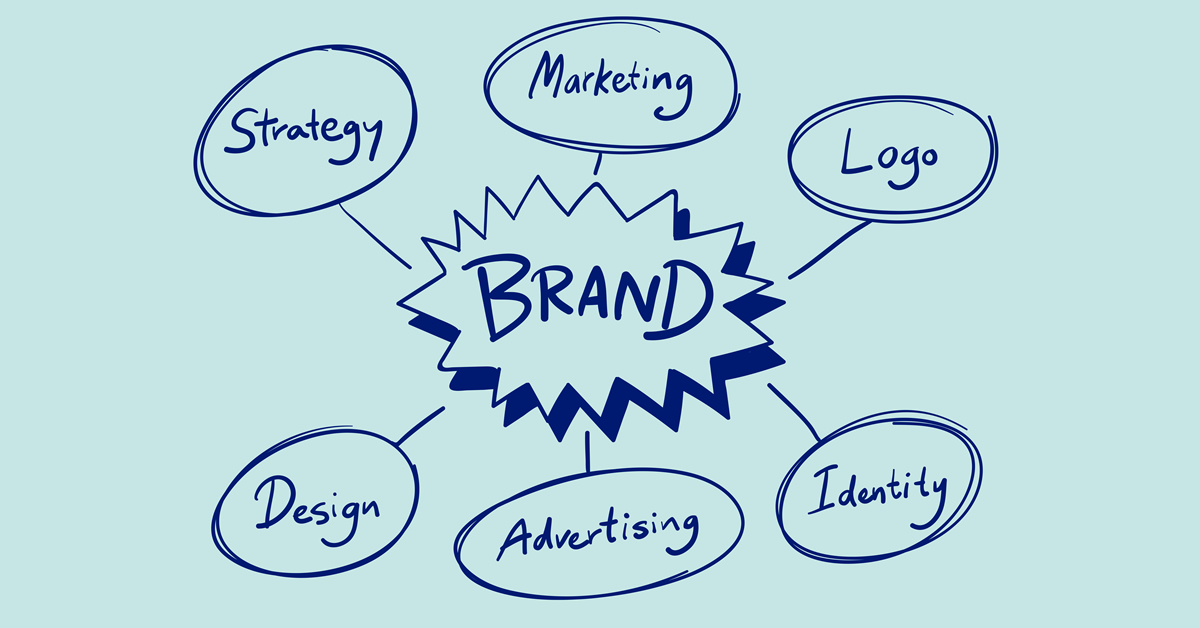
These are times where “positioning” and “differentiation” have become key assets for brands, and we would like to explain to you what is visual branding as a part of a brand strategy and why it is so important to create a visual identity for your business.
We would love to start making a difference among three concepts which are frequently interspersed with each other. These are: brand, brand identity and branding.
What is brand, brand identity and branding?
Brand can be defined as the user perception of a business, so that “brand identity” creates itself as the result of a branding strategy, which gathers all actions carried out by the company to generate its pursued identity.
Once the difference between these elements might be understood, let us move to talk about the visual side of a company’s branding campaign.
What is visual branding?
Visual branding covers all visual elements displayed by a company as a tangible part of a global brand positioning strategy.
Imagine for a second that you are about to launch a whole brand new business so you have run an event where you will gather all your potential clients and try to pull them to your business.
From the bigger picture, the entire event would be the branding action itself, and all the visual elements you have chosen (colors, designs, info displays) would make up the visual branding part.
We focus on visual elements of a branding campaign as it is important to set the difference between these actions and the logo or identity itself.
So then, visual branding covers only all visual elements that pursue the transmission of a business essential idea to guide users differentiate a brand from others.
Therefore, visual branding is located inside an entire branding strategy setting up all visual elements that will position the company in users mind.
What are the main elements of your brand in visual branding?
Let us now define visual branding main elements and the importance of its definition.
Logo
As the visual element that makes users recognize your brand at the first shot. For example, everytime we see Nike logo, we know it is about a worldwide sports clothing firm. This company does not need added messages to their logo as we are able to position the company when seen.
Typography
The typing characters style that represents your company values. In this case, if we think about the firm Louis Vuitton, we can see that their initials LV, as well as making up the brand´s logo, usually appear as part of their clothing designs, due to the power of brand identity they reach through chosen typography.
Color manual
Maybe you have paid attention to the meaning of brand colors, depending on what concepts they are trying to set up in our minds. Therefore, if a brand seeks to display authority and elegance, like the firm Chanel, it will take black and white colors. There are color guides to help you through choosing the right colors based on your company values.
Image styling
When developing corporate images, companies carry out a display of patterns that must be common to all images. This visual branding strategy affects concepts such as lighting, focus or filters that are superimposed on images, thus generating a global brand sensation.
Illustrations
Several companies produce original illustrations as part of their visual content, in a way that helps users understand their brand identity with no need of seeing their logo. A good example would be the Ronald McDonald´s character from McDonald’s.
Graphic elements
As graphic elements of the visual identity we understand all the physical supports that are used in the spaces where the branding action is taking place. The materials that make up the design of a commercial space or event, may enhance brand awareness through an effective visual branding strategy.
Why is visual branding so important for your business?
Once the elements that make up the visual part of your branding strategy have been analyzed, we would like to explain the benefits that this strategy brings to the “positioning” of your brand in the market.
Qualified lead generation
If you manage to define a successful visual branding strategy, people will accurately understand your business, and this will help you attract the audience that suits you best, decreasing customer acquisition costs.
Decrease in the commercial task
It is not the same to defend a product nobody knows, than to talk about something that already has numerous references. This can shorten sales funnel and improve the productivity of the sales department.
Adding value allows to justify higher prices
When we acquire a product or service with high brand value, we do not question its elevated price, since we feel represented by the brand and we grant a value equal to its price.
It allows creating loyal communities
By developing a unique visual branding strategy, we get people to trust our brand and become representatives of it and promote it among their networks.
Differentiation from competition
Companies investing in professional visual branding strategies obtain a high level of differentiation compared to those that follow traditional methods with zero investment. Today, more than ever, differentiating yourself from the competition can be crucial for obtaining positive returns from business activity.
Conclusion
As we have seen throughout this article, carrying out a visual branding strategy within your company is increasingly important due to the benefits it can bring to the success of your business.
It must also be taken into account that this strategy must be renewed from time to time, showing that your company evolves as the market does, always in line with current trends.
Therefore, do not hesitate to invest in brand image through visual branding as a guarantee of success for your business.
Did you know the term visual branding or visual branding?
Leave us your opinion and share it with our community.
Share it at your Social Networks
You may also like...



No Comments in What is Visual Branding and why it is important for your brand?
Sorry, comments are closed...